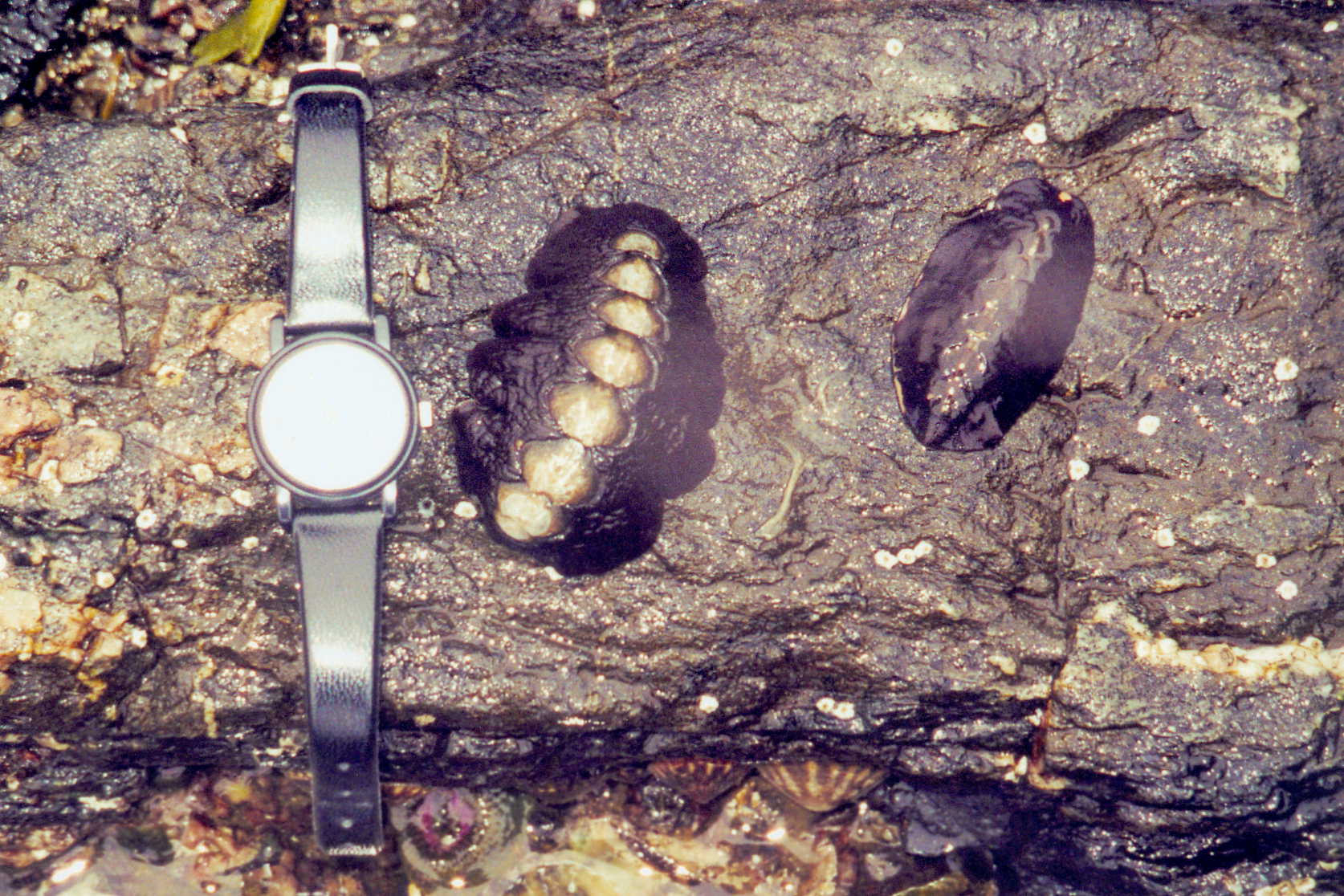Katharina tunicataBlack Chiton |
|
| Synonyms: None |  |
| Phylum
Mollusca
Class Polyplacphora Order Neoloricata Suborder Chitonina Family Mopaliidae |
|
| Katharina tunicata; taken at low tide at Swirl Rocks | |
| Photo by: Ryan Lunsford 2002 | |
How to Distinguish from Similar Species: The black chiton is easily distinguished from other chitons by the texture and color of the girdle.
Geographical Range: Alaska to Santa Barbara, Ca and in Kamchatka
Depth Range: Very common in the middle and low inertidal zones
Habitat: They attach to rocks where they are exposed to heavy wave action.
Biology/Natural
History: There is
a large amount of molecular and genetic research done on Katharina.
The K. tunicata is diploid and has a haploid number
of 24.
The changes in organic composition of the tissues and systems along
with
the life cycle of the chiton have also been studied. Lipids
and blood
proteins levels are high through the majority of the life cycle, but
both
decrease dramatically prior to spawning. The organic
compositions
of most other systems remain fairly constant seasonally.
Damaged
plates can be repaired in just a few weeks. The diet of the
black
chiton includes brown and red algae as well as benthic
diatoms. Reproduction
is sexual and full maturity just over a year. The entire life
span
averages 3 years.
| Return to: | |||
| Main Page | Alphabetic Index | Systematic Index | Glossary |
References:
Dichotomous Keys:
Kozloff,
1987.
Marine Invertebrates of the Pacific Northwest. University of
Washington
Press.
General References:
Morris,
Abbott, and Haderlie, 1980. Intertidal
Invertebrates of California.
Stanford Univ. Press.
Scientific Articles:
General Notes and Observations:
This species is so prevalent in the mid-intertidal region that it can be used as a marker for the intertidal zones.
Authors and Editors of Page:
Ryan Lunsford (2002): Created original page
Edited by Hans Helmstetler 1-2003